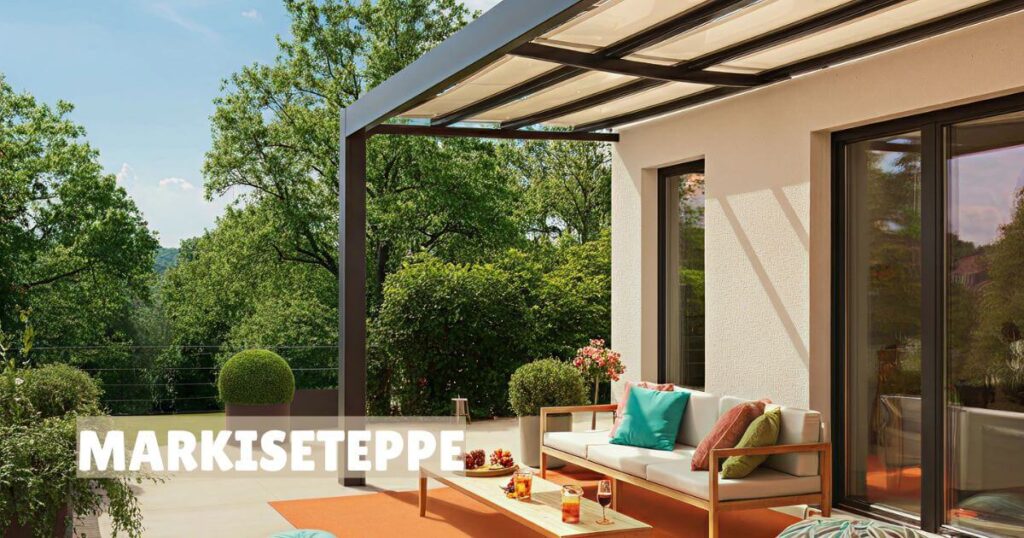Introduction
Outdoor spaces have become an essential part of modern living, offering areas for relaxation, dining, and social gatherings. A critical component in making these spaces comfortable and stylish is the markiseteppe, or awning fabric. Markiseteppe not only enhances the appearance of your patio, balcony, or garden but also provides essential protection from harsh sunlight, UV rays, and rain, making your outdoor areas usable throughout the year.
This guide will explain what markiseteppe are, their benefits, types, material options, how to choose the right fabric, maintenance practices, and related frequently asked questions to help you make an informed decision.
What is Markiseteppe?
Markiseteppe refers to the fabric used in awnings for outdoor shading. It is designed to offer:
- Sun and UV protection
- Weather resistance
- Improved privacy
- Decorative enhancement for outdoor areas
Available in various colors, patterns, and materials, markiseteppe allows homeowners to customize their outdoor shading solutions while ensuring durability and functionality.
Benefits of Markiseteppe
Sun and UV Protection
Markiseteppe can block a significant portion of UV rays, reducing the risk of skin damage and protecting outdoor furniture from fading.
Temperature Control
By providing shade, these fabrics help reduce heat, keeping patios, balconies, and indoor areas cooler, which can contribute to lower energy consumption for air conditioning.
Rain Protection
Certain types of markiseteppe offer water resistance, allowing you to enjoy outdoor spaces even during light rain.
Aesthetic Value
The variety of colors and designs available allows you to enhance the visual appeal of your outdoor spaces, complementing your home’s architecture.
Privacy Enhancement
Markiseteppe can act as a visual barrier, providing privacy from neighbors and passersby.
Types of Markiseteppe Fabrics
Different fabric types are used for markiseteppe, each offering unique benefits:
Acrylic Fabrics
These fabrics are popular for their colorfastness and resistance to weathering. They are breathable, which helps in reducing heat build-up under the awning.
Polyester Fabrics
Polyester is known for its durability and lightweight properties. Many polyester fabrics are treated with coatings to enhance water resistance and UV protection.
PVC-Coated Fabrics
These are waterproof and easy to clean, making them suitable for areas with heavy rainfall. However, they may retain more heat under the awning.
Mesh Fabrics
Mesh allows airflow while blocking sunlight, making it suitable for hot climates where ventilation is as important as shading.
How to Choose the Right Markiseteppe
Consider the Climate
Select materials based on your local weather conditions. For areas with high rainfall, PVC-coated fabrics are ideal, while breathable acrylic or mesh fabrics are better for hot, sunny regions.
UV Protection
Ensure the fabric has a high UV resistance rating to provide effective protection from harmful rays.
Color Selection
Lighter colors reflect sunlight and heat, keeping the area cooler, while darker colors provide denser shade but may absorb more heat.
Maintenance Requirements
Choose a fabric that is easy to clean and resistant to mold and mildew.
Aesthetic Fit
The color and design should complement your home’s exterior to enhance curb appeal.
Size and Fit
Measure your awning structure accurately to ensure you purchase the correct size of fabric.
Maintenance Tips for Markiseteppe
To extend the life and appearance of your markiseteppe, follow these maintenance practices:
- Clean the fabric regularly using mild soap and water to remove dust and prevent mold growth.
- Avoid retracting the awning while it is wet to prevent mildew formation.
- Inspect the fabric periodically for any tears or signs of wear, and repair them promptly.
- If possible, retract the awning during storms or strong winds to prevent damage.
- For areas with harsh winters, consider removing or covering the awning during the off-season.
Frequently Asked Questions
What is the lifespan of markiseteppe?
With proper maintenance, markiseteppe can last between 5 to 15 years, depending on the material quality and exposure to weather conditions.
How often should markiseteppe be cleaned?
It is recommended to clean your markiseteppe at least once every season or as needed when dirt or stains become visible.
Can markiseteppe be waterproof?
Yes, many markiseteppe fabrics, such as PVC-coated polyester, offer waterproof capabilities, while others are water-resistant.
Is it possible to replace the fabric on existing awnings?
Yes, you can replace markiseteppe on your existing awning frame, allowing you to refresh your outdoor space without replacing the entire system.
Conclusion
Markiseteppe plays a crucial role in creating a comfortable, stylish, and functional outdoor living area. By providing protection from the sun, UV rays, and rain while enhancing the appearance of your outdoor space, investing in high-quality markiseteppe is a smart decision for homeowners who value outdoor living.
Choosing the right material, color, and design tailored to your climate and aesthetic preferences, along with proper maintenance, will ensure you get the maximum benefit and longevity from your markiseteppe investment.



